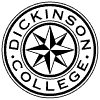 The Question of Rank Among the Faculty of 1934
The Question of Rank Among the Faculty of 1934 The Question of Rank Among the Faculty of 1934
The Question of Rank Among the Faculty of 1934 There was an underlying position of rank among the
faculty of 1934. Both the new and old professors knew where each other
stood, however, it was not spoken about at the time. Only later do we see
comments from retired faculty members about the ranking system among each
other.
One place to look for rank is among the salaries
of the professors. Salaries were set up on a monthly basis for either ten,
eleven or twelve months of the year. It was not uncommon for certain professors
to get paid differently depending on the month. The account book of salaries
paid to the faculty during the 1933-1934 school year was set up from the
highest ranking member of the faculty to the lowest. Salaries ranged from
roughly four thousand dollars to one thousand dollars a year.1
Whether
salary was based on when the professor joined the faculty is an interesting
point because it does not hold true for a majority of the professors. If
we look at how qualified a professor was based on their education for their
salary we see a somewhat stronger case to argue. One would think that if
a professor obtained their Ph. D., they would be paid accordingly. However,
there are at least two cases where this is not true. Even if one looks
at a faculty member's salary in conjunction with their given title, such
as Instructor, Assistant Professor, Associate Professor or Professor, there
should be a correlation between the two. This is mostly true for the majority
of the faculty, however, there are a few cases where this does not apply
as well. The best explanation for the faculty's given salary is a combination
of all the factors stated above: education, when they arrived at Dickinson
College and their given title. There is no apparent set salary for those
who have the title of Professor, Associate Professor and the like. This
leads many to believe that salary was decided upon by the administration
and many factors were taken into account such as rank and education.
Another interesting aspect is were women stood on
the faculty. In 1934 there were only five women on the faculty. Two of
the five were librarians, May
Morris and Isabella
Thoburn McMaster. Two were Associate Professors of their related field
Mary
Buckley Taintor and Josephine
Brunyate Meredith. Meredith also held the position of Dean of Women.
Esther
Winifred Chapman, Instructor of Physical Education for Women, was the
fifth woman on the faculty. Dean Meredith became the first women to be
granted full Professorship at the college in 1943.2
Taintor became the third women to achieve Professorship in 1951.3
Besides rank concerning salary, there were also
the viewpoints or standards that the older faculty members held and the
new members were expected to gain over time. Ralph
Schecter, who joined the faculty in 1922 as an Instructor in English
and the Director of the College Band and Orchestra, commented on this in
a letter to Charles Coleman Sellers: "In 1922 I was one of the three young
men [along with Lewis
Guy Rohrbaugh and John
C. M.Grimm]added to a faculty of much older men, most of whom had been
here [Dickinson College] a long time. I soon discovered that the members
of this older faculty talked chiefly about their poorer students among
themselves-a sort of licking of each others wounds."4
He goes on to mention that by 1930 the educational philosophy among this
older faculty was that "a large number of student failures in academic
classes indicated a high standard of teaching-a philosophy that is of course
preposterous."5
The changing of the presidency clearly showed the
different viewpoints of the faculty based upon on when they joined. The
faculty was very much affected by the changing presidents at this time.
Most of the older faculty were used to James Henry Morgan and his policies
and ideologies. However, when Karl Tinsley Waugh took over in 1932, many
of the older faculty members could not handle his progressive reforms.
Horace
Elton Rogers, an Associate Professor of Chemistry at the time, later
wrote in his paper, "Fifty Years and More as a Student and Professor at
Dickinson College," that many of Waugh's reforms did not meet Morgan's
approval.6 Morgan would frequently
visit Waugh which made it hard for Waugh to succeed. Rogers was one of
the younger faculty members since having been appointed to the faculty
in 1925. He and other younger faculty members actually wanted Waugh's progressive
reforms. Rogers mentions again in his paper that "some of us on the faculty
felt that Dr.Waugh's progressive administration ended all too soon. Several
of the reforms Dr. Waugh had have subsequently been put into practice."7Read
more about the changing presidency and its effects
Rank among the professors was certainly felt among
themselves and the college community. The faculty of 1934 only had a few
of the "much older men" from the turn of the century. By this time most
of the faculty came during the twenties and brought a fresh view to campus
policies.
Footnotes
Bibliography
 |
|
Dickinson 1934 is a project of Prof. Osborne's History 204 Class, Fall Semester 2000. |